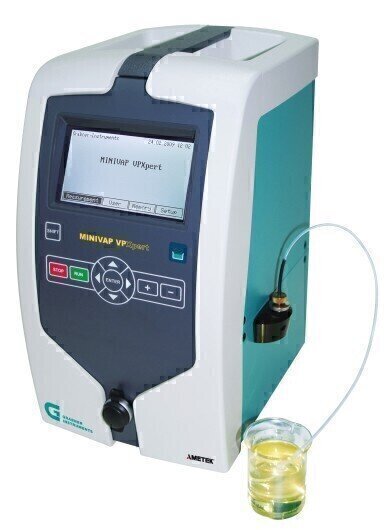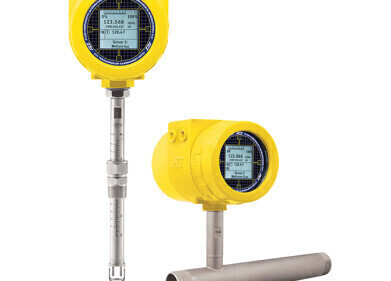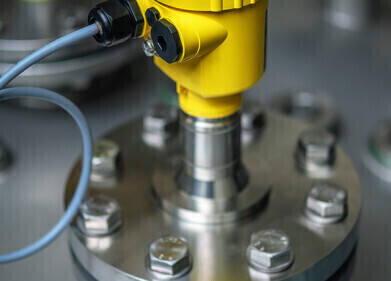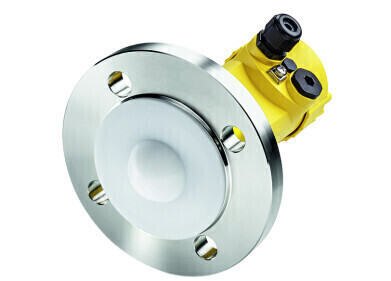Flow Level Pressure
US EPA Confirms ASTM D6377 as Alternative Test Method For Crude Oil Vapour Pressure
Oct 11 2013
A new method for measuring the True Vapour Pressure (TVP) of crude oils is spreading quickly within the oil and gas industry. At request of the American Petroleum Institute (API), the US Environmental Protection Agency (EPA) recently confirmed the use of the ASTM D6377-10 standard as an alternative test method for the determination of the True Vapour Pressure of high VP crude oils. Widely used by the industry, the new method is installed on AMETEK Grabner Instruments (Austria) vapour pressure testers.
As defined by the International Maritime Organisation, the True Vapour Pressure (TVP) or bubble point vapour pressure is the equilibrium vapour pressure of a mixture when the vapour/liquid ratio (V/L) is zero. A V/L = 0 can be achieved, if a container is filled to the top with crude oil. This condition is typical for floating roof tanks, where the roof is floating directly on the crude oil.
As clear as this definition seems, a correct interpretation of the TVP term always depends on the specification for which it is used. In refining, the term TVP often is used to reflect the specific conditions of storage or transport. For example, if a truck or a ship is filled 95% with crude oil and only 5% vapour space remains, the vapour pressure at a V/L = 0.053 may be referred to as TVP. In US EPA title 40 regulations, the term TVP is used for a TVP estimate calculated from a D323 Reid Vapour Pressure measurement and the crude oil´s tank stock temperature.
In its letter dated May 28, 2013, the US EPA acknowledged the broad use of the ASTM D6377-10 standard for VP measurement of crude oils. It confirmed the use of D6377 as an alternative method for TVP measurement of volatile crude oils, as defined under title 40 CFR with the understanding that crude oil samples are delivered pressurised for measurement to prevent evaporation of light ends and that the TVP is measured at a V/L = 4.
The ASTM D6377 method is very versatile. It allows measurement of the TVP at various V/L ratios to reflect different tank filling levels. In addition, Grabner analysers include a method for Bubble Point determination. Sandia National Laboratories has used this Bubble Point / TVP extrapolation method successfully (see Lord & Rudeen, 2010): From three D6377 measurements at different V/L ratios the TVP of crude oil at a V/L = 0 is extrapolated. The extrapolation function assumes that crude oil is composed of three components: very light gas components (e.g. methane or nitrogen), intermediate volatility components (e.g. C2 and higher) and a non-volatile fraction (Lord & Rudeen, 2010).
Grabner analysers have used the TVP extrapolation method successfully around the world. The method was successfully demonstrated on large number of crude oil samples at the US Strategic Petroleum Reserve, and similar TVP extrapolation project is currently underway at the Canadian Crude Quality Technical Association (CCQTA).
Digital Edition
PIN 25.2 Apr/May
May 2024
Safety - Carbon monoxide toxic and flammable gas detection Analytical Instrumentation - Density: A fundamental parameter at critical stages within the petroleum sector - Advancements and...
View all digital editions
Events
May 13 2024 New Orleans, LA, USA
May 14 2024 Tashkent, Uzbekistan
May 14 2024 Oklahoma City, OK, USA
May 15 2024 Lund, Sweden
May 15 2024 Copenhagen, Denmark


















